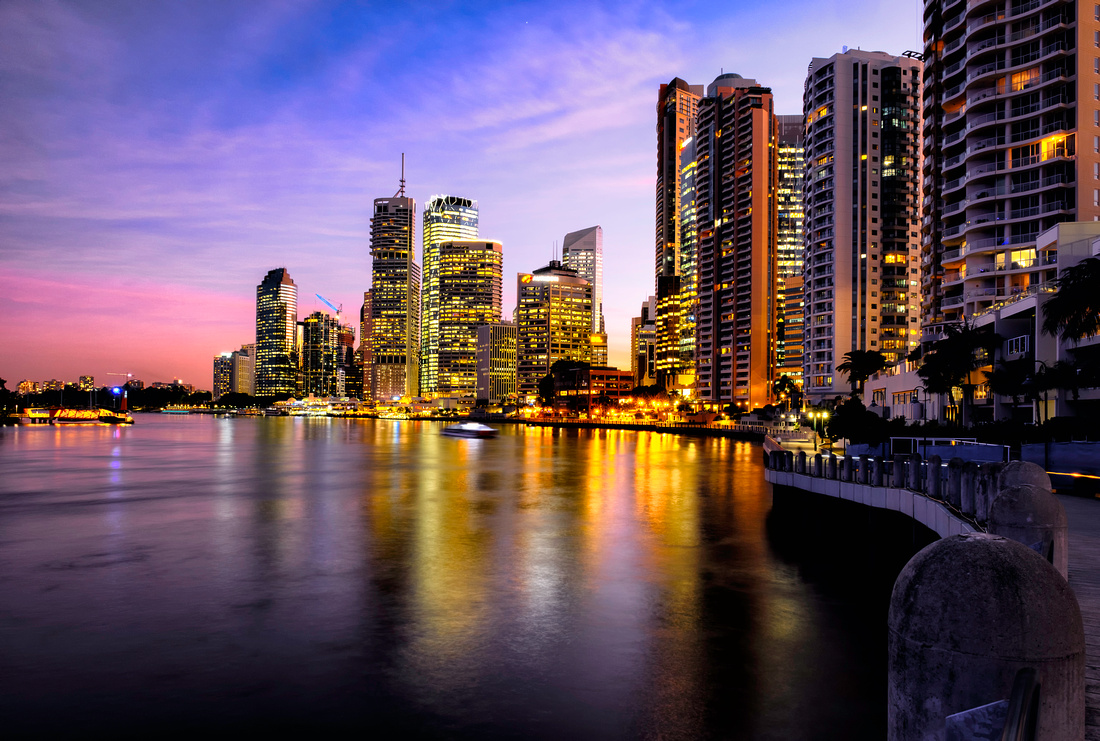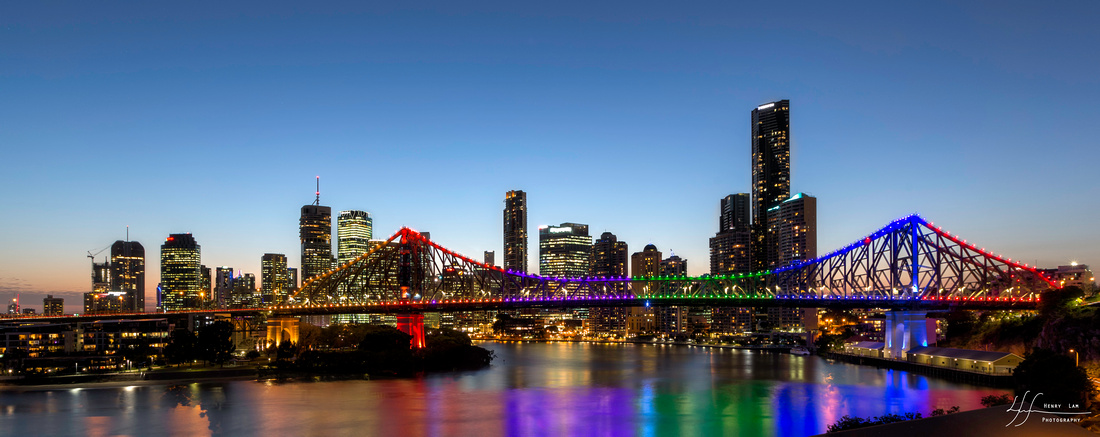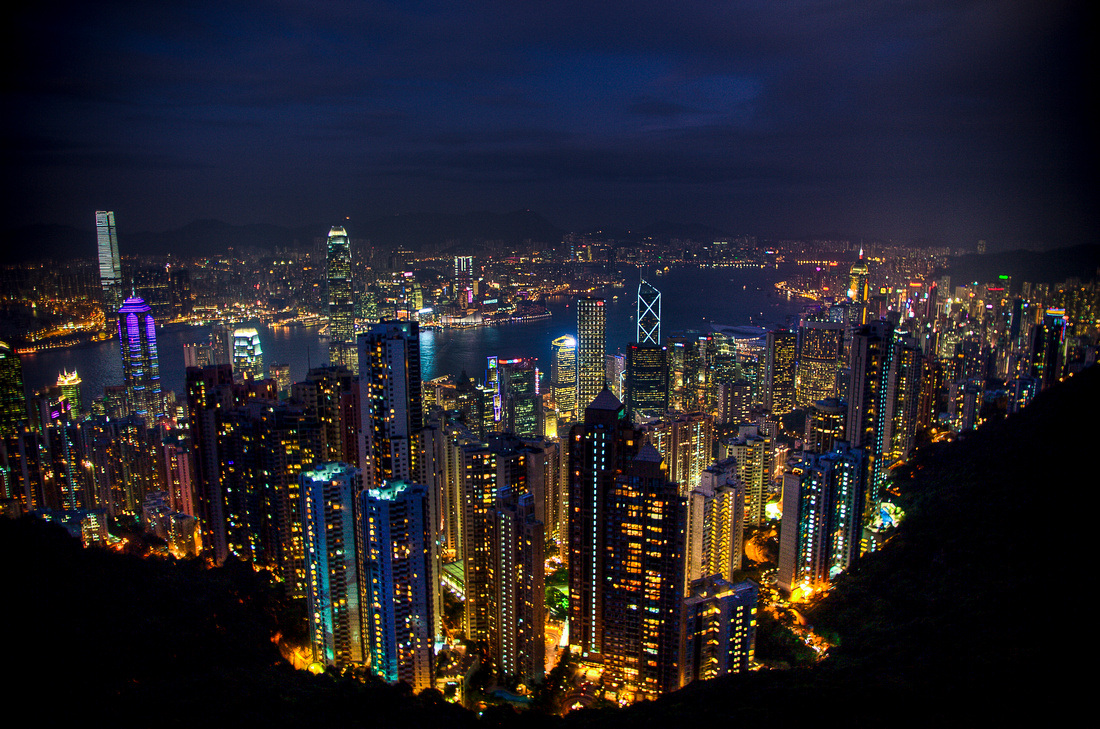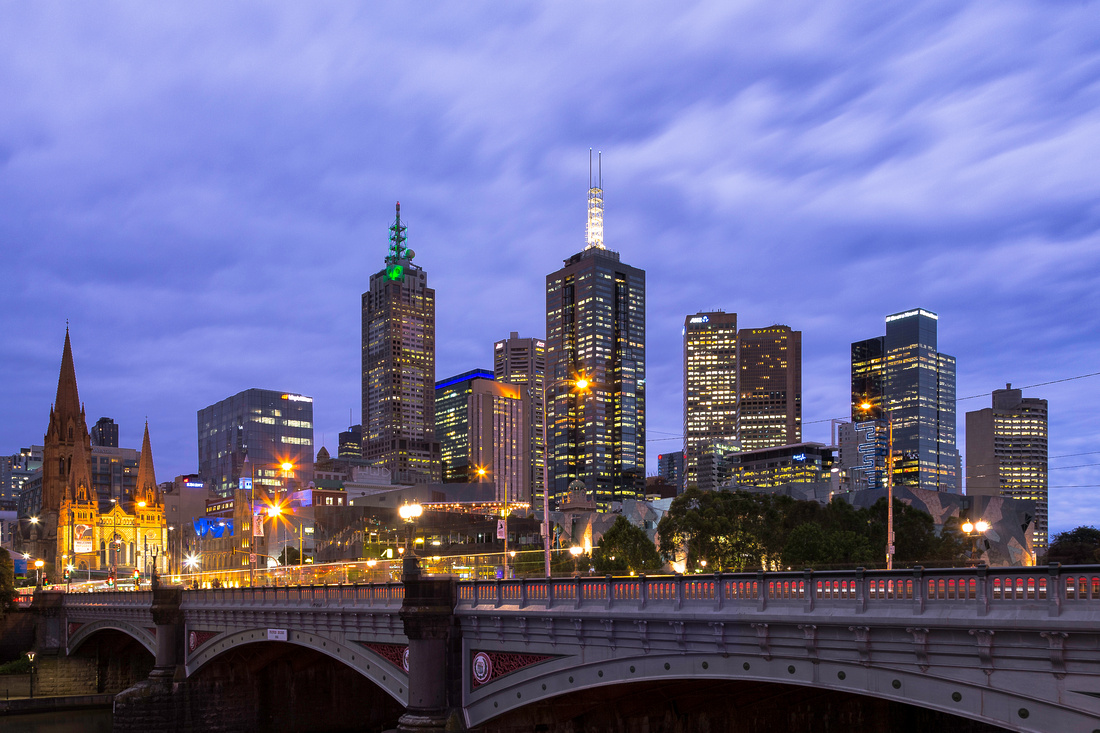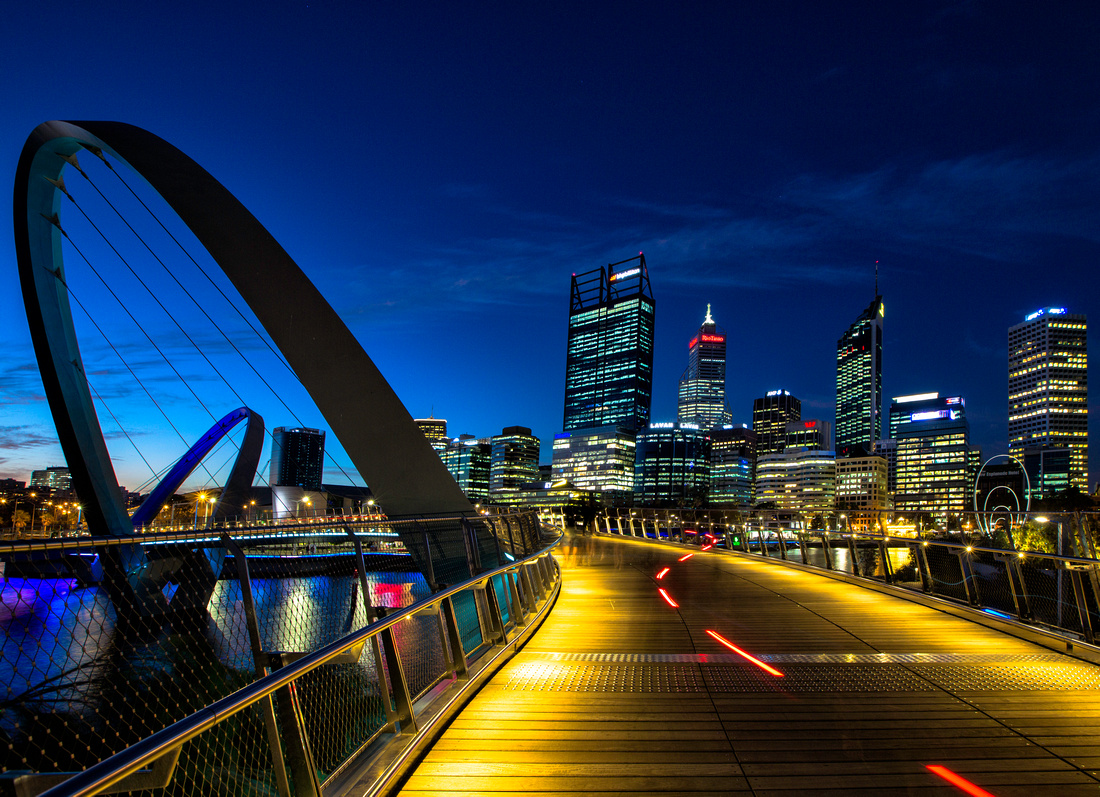How to Photograph the Cityscape During Blue Hour
Photographing a cityscape can be a very rewarding experience. We have all been in a situation where we want to take best picture we can of the city we live in or come to visit. This blog post will give you my insight and tips on how to achieve the best possible picture you can.
Understand your Equipment
Just like all photography, the more verse you are at using your equipment the more proficient you will be at maximising its potential. There is very little point in using a high end DSLR if you don't know how to change or make adjustments to its fundamental settings. Settings that are useful for shooting cityscapes are:
- Changing the image quality to shoot from JPEG to RAW (Always Shoot in RAW where possible)
Cityscape require a bit of help to blend exposures and extract details. Shooting in the RAW format of your camera gives the most latitude for editing, thus giving the better finished product in the end.
- Fire the camera remotely
When you require the camera to be still and uninterrupted, it is always good practice to fire your camera remotely, delayed (Self-timer) or wirelessly. Even the slightest touch could nudge the camera in an unwanted direction. The error may seem faint at first but when you comes to laying 7 bracketed shots on top of one another the smallest errors become apparent. By setting off the camera without touching the shutter can reduce the chance of this happening. Mirror lock up is also a good option to turn on if available.
- Activate the histogram
Sometimes the LCD on the back of the screen can give false information. Things can appear bright or dark due to the environment of which you are using it in, or even the brightness level the camera is currently set at. A histogram gives a good graphical representation of the distribution of pixels along the image. The important things to be aware of when shooting and histogram is that there is little to no, clippings on the edge of the histogram. This requires a bit of forethought because subjects such as the sun, will almost always be a clipped highlight.
- Setting Focus and locking it
Once the camera has its focus set it should be locked into position. This can be achieved by either pre-focusing the camera first and switching it to manual focus. I personally like to use back button focus.. so that my shutter button doesn't activate any of the auto focusing systems.
- Bracket your images
Bracketing your images is a good way of making sure that the dynamic range is covered.
Plan
Cityscape photography requires a bit of planning before shooting. You need know know the Where is the best location to capture the image. A good resource is using the internet for reference. I like to just use google images, where I type in a search for cityscape images of (CITY) and take a quick sample of where other photographers have taken images of that particular city. Also pay special thought to the position and path of the sun. Once you know where to take the picture the next is the HOW.
HOW to get to that location, does the location require a hike or specialised mode of transport. If its a hike do you have the proper attire and equipment to make it possible.
WHEN. In my opinion the best time to get a cityscape image is during the twilight/blue hour period. Twilight occurs when the sun has dipped below the horizon and the the colours of the sky go from warm reddish/orange colours to a deep blue. This happens just before it goes black. Twilight happens twice during the day, before sunrise and after sunset - or in the A.M or P.M hours.
For cityscapes, the P.M twilight tends to work better. This is for several reasons as I will point out:
- More city lights and street action is happens during the P.M because people stay late at work (office lights) and cars on the street.
- People are generally asleep and not in the office during the A.M (thus less lights)
- Don't require to wake up REALLY early in the morning
- Setting up in the evening, there is still plenty of available natural light, so you can see, compose and set yourself up well ahead of time
The best resource for me to find out when to shoot is the weather website www.wunderground.com To use this site you can enter the city you want, then click on the Sun and Moon link and you will give you 3 points of Twilight sessions during the day. The most optimal twilight is Civil twilight. that is the time when you want to be a the peak of shooting the ambient city lights.
One important thing to note about cityscape photography is the particular day or period of the year you are shooting in. On a week to week basis, the best to shoot cityscape is during mid week (Tuesday and Wednesday). This is because most of the businesses and corporate buildings often work into the twilight period. People tend to stay later at night at work during the mid week and taper off as the week ends towards Friday. There is usually just a fraction of business lights on during the weekends.
WHAT to bring is very important in your preparation. The most common things you require are:
- Camera with fresh memory cards and full batteries
- Correct lenses at the appropriate focal lengths. (I find lengths from 16-35 are the most useful) for cityscape landscape
- Tripod
- Camera shutter release or remote triggering system
- Appropriate clothing/Shoes/weather protection
- Insect repellant
- Lens cloths and camera cleaning equipment
- Protective camera bag
- Water
- Torch or headlamp
Setting the Photograph
Arrive on location Early
It is wise to arrive on location early, by using the information given on Wunderground.com you can easily backwards plan your day. If the site states that Civil is going to happen at 7:14pm in the evening, you should try to get to location at least 1 hour prior that at 6:15pm.
Popular locations such as lookouts will attract other tourists and photographers so you want to have the first grabs of the optimal locations. Once you have found your point of composition, here is a checklist of recommended things you want to set prior to getting your collection of images.
- Set and secure the tripod and ensure that horizon is level, consider the compositional rules such as horizon lines on lower or upper thirds - Also ensure that the tripod is on a solid surface and not in contact with any walls or fences that people could move.
- Ensure that there are no distractions and unwanted objects poking from the edge of the frame. (Eliminate these minor errors on camera and it will save you a tonne of work on computer processing.
- Set your camera to shoot in RAW format
- Set and lock your point of focus, by focusing onto a building and use tools such as your live-view to verify that you have sharp focus. I like to refer to text and signs on buildings for reference.
- Activate overall metering, Canon calls this Evaluative, Nikon calls it Matrix to get a general correct exposure
- My preference is to shoot in Aperture Priority mode and let the camera choose the shutter speed. I like to use F8.0 but you can use between F8.0 - F16
- Have your ISO set to the lowest native value. (Native is when you are not using any ISO extensions) if you are not sure. ISO 100 or 200 is GOOD.
- I recommend turning off Noise reduction setting on the camera, this will help you speed up your in camera processing between shots.
- Turn on your brightness histogram and review it whenever possible, to ensure that all the detail are within the boundaries. - Having blinkies or high light alert on is also a good idea to ensure highlights are preserved - Things like Street lights may eventually blow out, this is natural.
- Keep shooting until your Shutter speeds start getting to around 10 seconds, after this you can stop shooting because city lights will begin to blow right out and signs on buildings will become unreadable.

